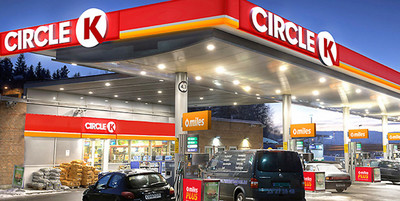Energy Pricing in a Changed World - NACS
CHICAGO April 19, 2017; NACS Online Report: How does energy pricing work in today’s world? Tom Kloza, global head of energy analysis at the Oil Price Information Service, discussed that topic at the NACS State of the Industry Summit, held April 4-6. Kloza suggested that only an unforeseen event of apocalyptic consequence would bring crude oil prices back to the $80-plus realm that the industry became used to in 2011 through the first half of 2017.
Kloza stressed that technology has raced ahead and shale production resembles a manufacturing process more than traditional oil production. Companies that had breakeven numbers of $75-$80 bbl in 2012 have now cut those breakeven levels to $35-$40 bbl in some cases, perhaps forever altering the calculus of price determination on the North American continent.
During his talk, he invoked the metaphor of a 7&7 cocktail to push the point. Huge oil projects, on land, in shallow water, and in deep water were funded in 2011-2012 when oil prices commonly flirted with $100 per barrel. Meanwhile, the start-up time for shale projects is about seven months. The megaprojects will come online in 2018 and 2019, and shale plays can be restarted or put into operation in seven months. It’s a combination that should be good for consumers, and somewhat reasonable for oil producers, refiners and marketers.
He also noted that investment houses, hedge funds and individual analysts clearly have vested interests and are “talking their books” when it comes to oil predictions. Speculators and investors tend to “predict what they want to happen,” and within the oil industry are particularly prone to hyperbole. Predictions of $75 per barrel to $80 per barrel crude are hyperbolic and the market may struggle to get to the relatively pedestrian number of $60 per barrel. That price for WTI was last seen in the spring of 2015, and it proved to be “an incredible head fake.”
One of the biggest battles that will rage in the next 10 years is what Kloza called the Octane-in-the-Octagon. New more efficient vehicles will need much higher octane and refiners, chemical companies and agricultural producers (ethanol) will battle for the right to include their output in higher octane formulas.
Gasoline margins have been fairly steady although they have declined from the same period in 2016. Ironically, the Northeast saw plenty of margin improvement. National rack-to-retail margins were measured at 19.3 cents per gallon compared to 19.4 cents per gallon during first 10 weeks of 2016.
Thanks partially to erosion in margins and volume, profits per fuel site dropped from about $16,031 in 2016 to $15,696 in same period (10 weeks) in 2017. The toughest place to turn a profit was the U.S. Southeast, with the Southwest a close second. February was one of the most challenging months in recent history with a typical profiled station seeing fuel profits drop by about $2700 from last February.
In a review of 2016, Kloza concluded:
- U.S. margins averaged 19.9 cents per gallon versus 20.4 cents per gallon in 2015. By far, the most profitable market was the western area (including the Rockies) where the difference between wholesale costs and retail prices was 32.7 cents per gallon.
- When all the data is crunched, average monthly profit was very close to 2015 levels. A typical site could count on gross profit of $17,265 last year, only slightly below the 2015 number of $17,696.
- There is little change in market share among the top chains. Shell leads the country with about 13% of stations, with Exxon at 6.1% and Chevron at 5.9%.
- In terms of market efficiency, the majors are absent. Wawa still leads its peers by a substantial margin. The data shows it’s better to be a very efficient operator with a big footprint in a smaller area, than try to compete in say 20 or more states.
- Estimated household cost for gasoline last year was $218 or about 5% of monthly income. That was down from $245 and 5.6% in 2015, and compares with monthly costs in the $324 to $344 range in the 2011-2014 period. Kloza suggested that 2017 would look a lot like 2015 with expectations of households paying about $250 per month for their fuel.
Kloza concluded that liquid fuels will be dominant through the early part of the next decade, but gasoline demand will decline, and some tweaks to CAFÉ standards will happen. Electric vehicles will gain traction but remain “bit players’ through the middle of next decade. Cheap oil will slow down the adoption of electric for much of the country.
Huge differences will loom for the rural, suburban, or urban fueling sites. Rural is probably the best bet in terms of profitability, but the flight of young people to the cities makes due diligence a tough task. The war on carbon is still ongoing, but it will move to the states during the Trump administration.
Finally, he predicted that 2017 gasoline demand would likely be about the same or lower than 2016, and suggested that the average retail price in 2017 would be in the $2.40s, with the high water mark occurring in the $2.60 per gallon to $2.80 per gallon range.



